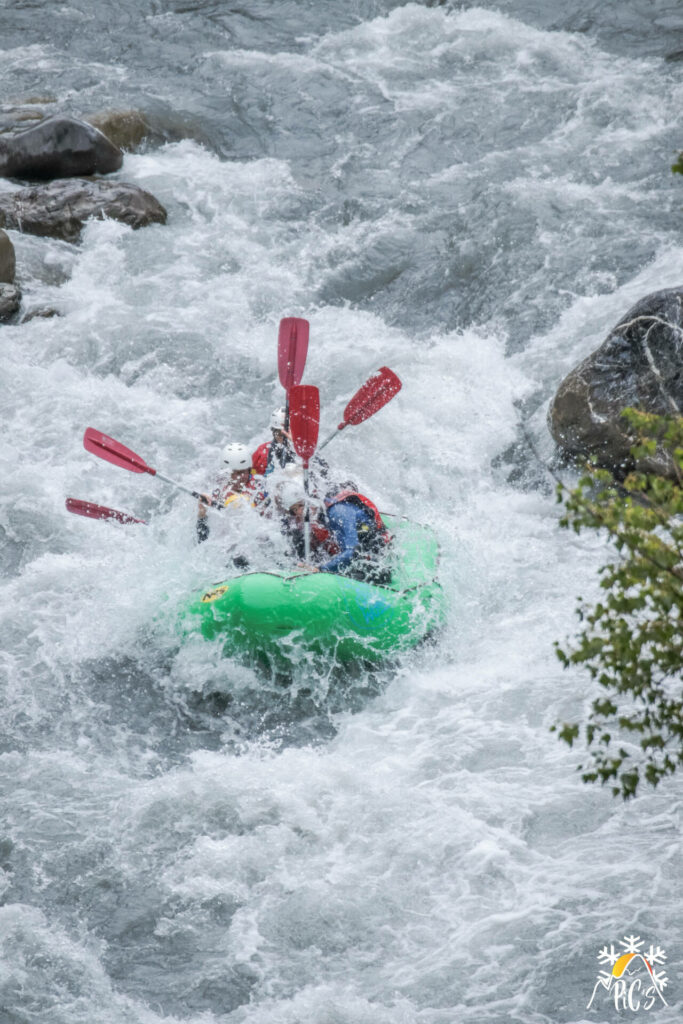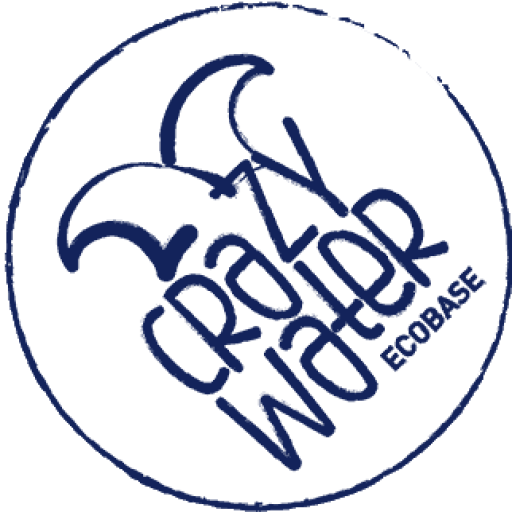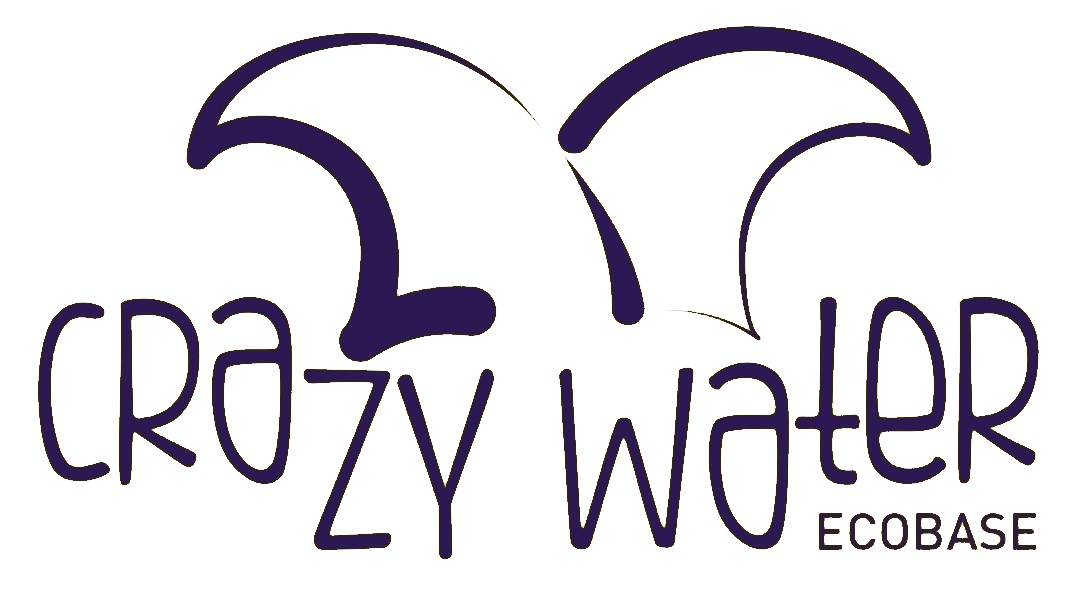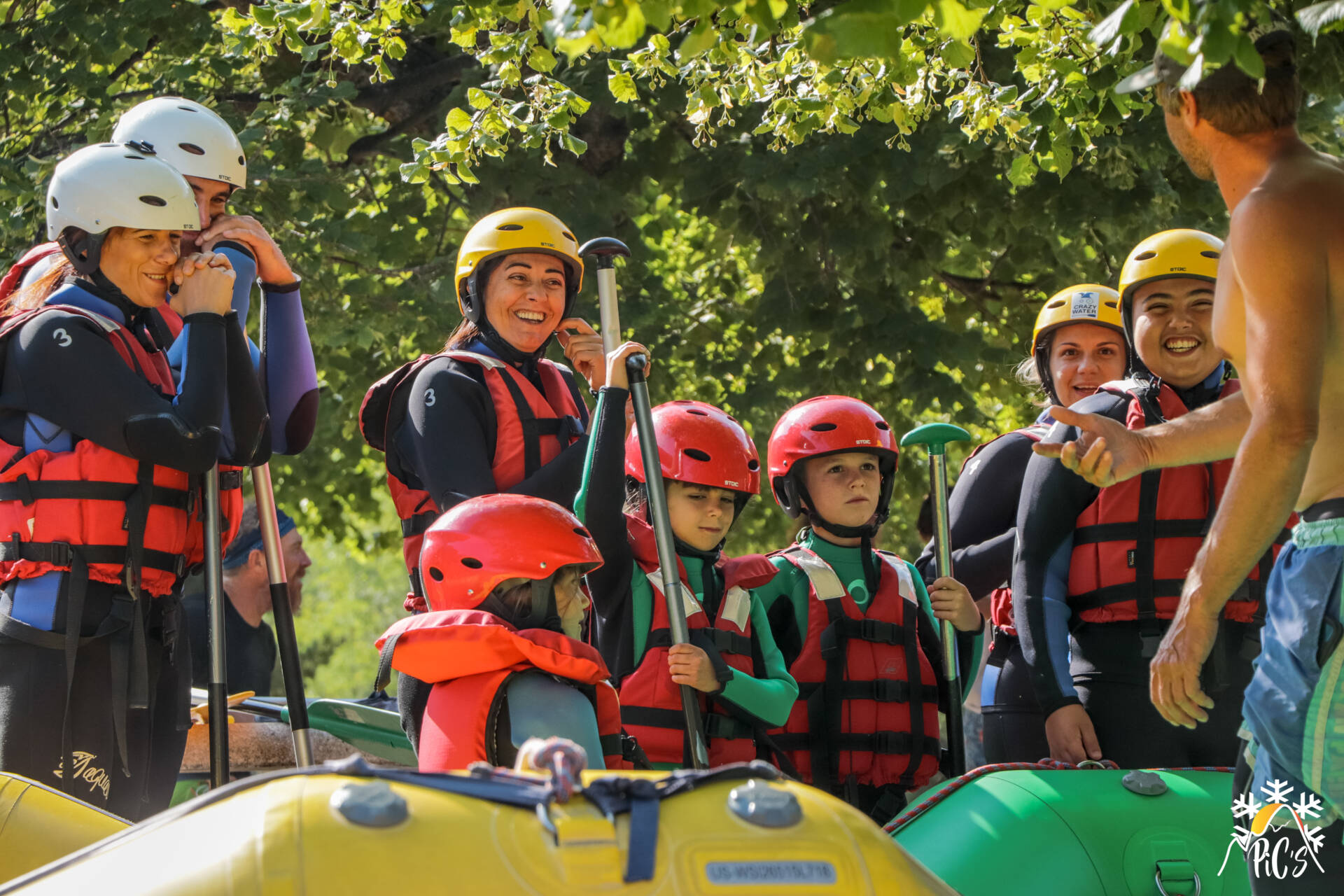Whitewater navigation vocabulary
Ah, white water navigation! A world apart, where each word has its own meaning and where language itself seems to have been shaped by rapids and whirlpools. If you're new to this field, you might feel a little lost among all these technical terms and previously unknown expressions. Crazy Water is here to help you understand the jargon of whitewater boating.
River
Upstream : Direction opposite to the direction of the water current. If you kayak up a river, you are said to be sailing upstream.
Downstream : Direction in which the watercourse flows. If you kayak down a river, then you are sailing downstream, following the flow of the river.
Class : Difficulty of crossing a passage, evaluated on a scale of 1 to 6. From class 3, the watercourse becomes difficult and is recommended only for experienced paddlers; Categories 5 and 6 are considered borderline airworthy.

👉 Read also : River class: complete guide for whitewater enthusiasts
Natural elements
Fast : Areas of the river where water flows quickly, creating turbulent movements and often waves. They are classified into different categories according to their difficulty, ranging from class I (easy) to class VI (extremely difficult and potentially dangerous).
Drosseage : Sharp bend in the river where the current directs the boat towards the outside of the curve.
Drosseage : Sharp bend in the river where the current directs the boat towards the outside of the curve.
Cooking pot : Zone of turbulence at the limit of the current and the counter-current (at the foot of an obstacle such as a rock or a bridge pillar) where the water descends by swirling and creating a depression. They are generally recognizable by their bowl-shaped appearance and the circular movements of the water inside.
Equipment
- Kayak : A small, light boat, usually for one or two people, propelled using a double paddle.
- Canoe : An open boat, when used recreationally, often larger than a kayak, propelled using a single-bladed paddle.
- Safety jacket : Essential safety equipment for any whitewater paddler, designed to maintain buoyancy in the event of a fall into the water.
- Paddle : Instrument used to propel a kayak or canoe through water. It can be single or double, with different shapes and sizes depending on the type of navigation.
- Olive : Handle located at the end of a single paddle.
👉 Read also : The equipment necessary for rafting – Beginner rafting guide
Movements and techniques
- Make a baccalaureate : Navigation method for crossing the river downstream without going back too far when there is current.
- Desalinate : Turn over or capsize. This is a situation where the boat overturns and where the objective after desalting is to right it and return to the surface of the water in complete safety.
- Eskimo : The technique of righting an overturned kayak without leaving the boat, using a combination of paddling movements and body rotation.
- Surf : The act of sailing on a wave in white water, using the force of the wave to move dynamically.
- Power recovery : Taking advantage of the force of the current to propel oneself forward.
- Stop : Also known as stopping against the flow, this is a navigation technique used on waterways where the current is less turbulent and flows upstream. This maneuver is of particular importance when there are impassable obstacles downstream of the river and it is necessary to stop.
- Circular propulsion : In a circular propulsion, the paddler makes a circular motion with their paddle around their body. This movement begins at the front of the kayak, then the paddle is pulled back in a curved path, exiting the water at the rear of the kayak. This circular movement generates a rotation of the boat.
- Direct propulsion : Direct propulsion, on the other hand, involves a more linear movement of the paddle. The paddler dips the paddle into the water next to the kayak, then pulls it straight back along the side of the craft, following a straighter path. This movement also generates a thrust that propels it forward.
- Back-propulsion or denage : Go all the way back! Unlike normal propulsion, retropropulsion consists of reversing a kayak. To perform a backpropulsion, the paddler dips the paddle into the water behind them and makes a forward thrusting motion, bringing the paddle toward themselves.
Security
- Portage : The fact of carrying your boat around a rapid or a dangerous obstacle rather than navigating it.
- Safety line : A rope attached to the boat or to a paddler to facilitate rescue in the event of a fall into the water.
- Broadside: Side of the canoe where the paddler is paddling. The “right plank” corresponds to the right side of the canoe, while the “left plank” corresponds to the left side.
Thanks to this glossary, you will no longer be surprised to find words like pots and olives in the mouth of your Crazy Water raft guide.


